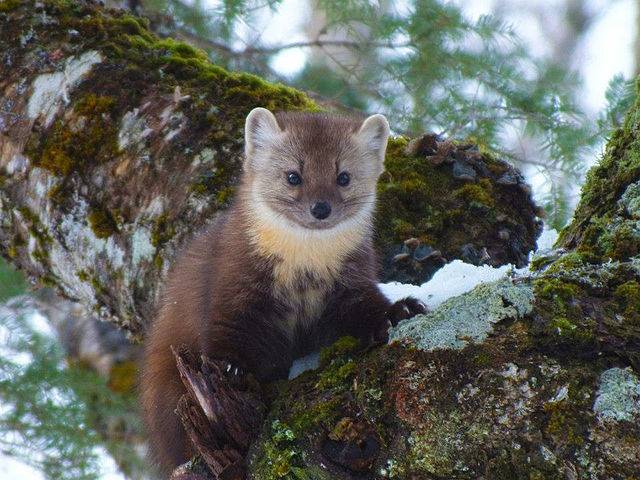Martens are enigmatic creatures that inhabit various ecosystems around the world. These members of the weasel family (Mustelidae) possess unique characteristics that set them apart. Let's delve into five intriguing facts about martens.
1. Diverse Habitat Range:
Martens display an impressive adaptability to diverse environments. From North America to Europe and Asia, they inhabit forests, woodlands, and even rocky terrains. This adaptability is attributed to their varied diet, which includes small mammals, birds, insects, and fruits. Their semi-retractable claws aid in climbing trees with ease, enabling them to traverse challenging landscapes.
2. Scent Communication:
Scent plays a crucial role in marten communication. They possess scent glands on their belly and near their tail. These glands produce a distinctive odor used for marking territory and attracting potential mates. By leaving these scents behind on their trails, they convey vital information to other martens about their presence, reproductive status, and territorial boundaries.
3. Nocturnal Predators:
Most martens are primarily nocturnal, meaning they are most active during the night. This behavior helps them avoid larger predators and take advantage of their excellent night vision. Their exceptional senses enable them to hunt effectively in low-light conditions, giving them an edge over their prey.
4. Reproductive Habits: Martens exhibit intriguing reproductive patterns. Many species have a delayed implantation mechanism, which means that after mating, the fertilized egg doesn't immediately implant in the uterus. This delayed development allows the offspring to be born at an optimal time, usually during favorable environmental conditions or when food is abundant. Additionally, martens often give birth to litters of multiple kits, which helps ensure the survival of at least some offspring in challenging environments.
5. Conservation Status:
Several marten species face threats to their populations due to habitat loss, deforestation, and trapping. The American pine marten, for instance, has experienced habitat fragmentation and a decline in numbers due to logging and urbanization. Conservation efforts are being undertaken to protect these creatures and their habitats, including reforestation initiatives and stricter regulations on trapping.
In conclusion, martens are remarkable creatures with a range of captivating traits. Their adaptability to various habitats, unique communication methods, nocturnal behavior, distinctive reproductive habits, and conservation challenges all contribute to their intrigue. As we continue to study and appreciate these creatures, it's essential to also work towards their conservation, ensuring that future generations can continue to marvel at the enigmatic world of martens.


